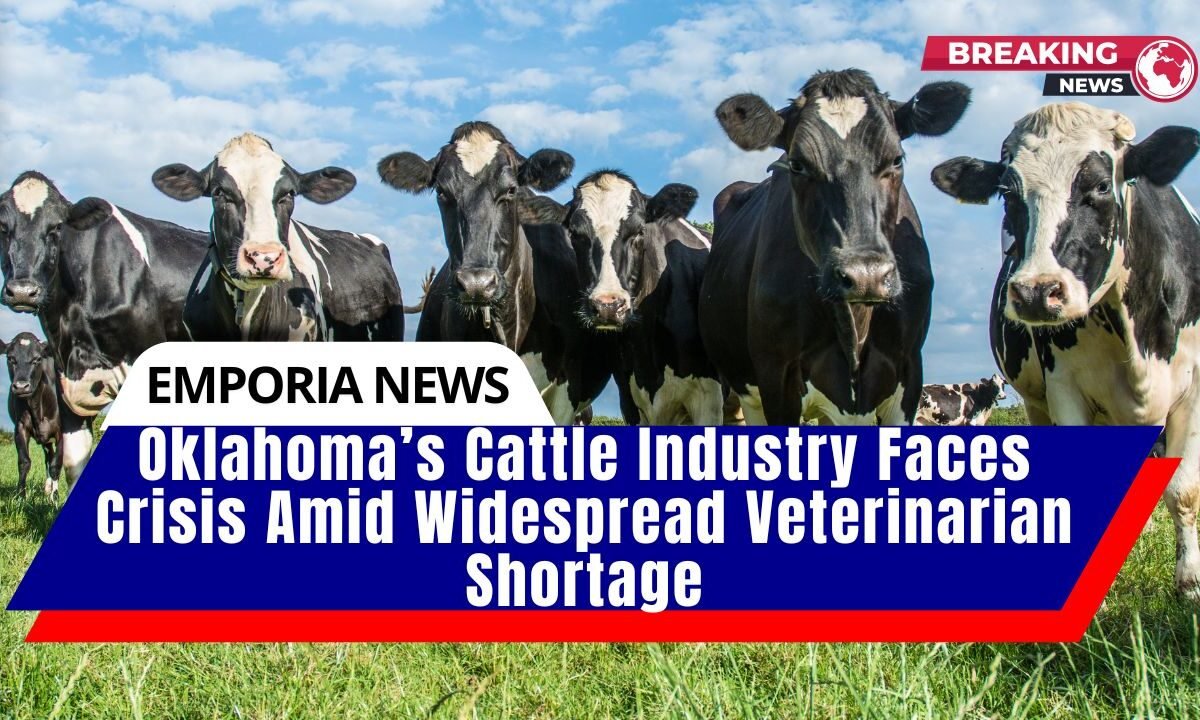Oklahoma’s livestock sector is confronting a major challenge as over 80% of counties are experiencing a shortage of rural veterinarians. The issue has escalated over the past five years, leaving cattle producers and rural communities struggling to access critical veterinary services.
Shift Away from Livestock Veterinary Practice
Data from the Farm Journal Foundation highlights a growing imbalance in veterinary specialization. While 76% of licensed veterinarians focus on companion animals, less than 25% specialize in domestic cattle. This trend has been deepening for decades.
“I graduated from Oklahoma State University in 1989,” said Dr. Troy Shelby, cattle producer and President of the Oklahoma Cattlemen’s Association. “Since then, there’s been a clear shift away from food animal and rural practice toward companion animal care.”
Impact on Ranchers and Rural Animal Care
For cattle producers, access to veterinary care isn’t just a convenience—it’s essential.
“It’s a scary situation when an animal is in distress, and there’s no vet willing to come out to rural areas,” Dr. Shelby explained. “We’re often left in a real dilemma without access to emergency services.”
Complex Challenges Behind the Shortage
According to Dr. Rosslyn Briggs, veterinarian ambassador for the Farm Journal Foundation and beef extension specialist at OSU, the shortage stems from multiple factors:
- High competition and cost to enter vet school
- Reluctance to work in rural, isolated areas
- Lower salary potential compared to urban clinics
- Limited employment opportunities for spouses in rural towns
“This is a multifaceted issue that needs a collaborative, long-term solution,” said Dr. Briggs.
Aging Workforce and Lack of New Talent
The situation may worsen: Over 600 veterinarians are expected to retire in Oklahoma within the next 10 years, and few young professionals are stepping in to replace them.
“There just isn’t the same interest among younger vets to serve remote communities,” Dr. Shelby noted.
In 2023, only 5% of Oklahoma State University’s veterinary graduates chose large food animals as their primary focus, while 28% selected mixed practice.
A Threat to Public Health and Rural Economies
Dr. Shelby emphasized the broader implications: “Veterinary care is not only vital to animal welfare but also to food safety, public health, and the economic stability of rural Oklahoma.”
Investing in the Future of Veterinary Education
To combat the shortage, the state is moving forward with a $250 million investment in a new veterinary teaching hospital in Stillwater, aiming to expand education and encourage more students to pursue rural animal care careers.
The ongoing veterinary shortage places immense pressure on Oklahoma’s livestock producers and threatens one of the state’s largest industries—animal agriculture.
With strategic investment and focused recruitment, Oklahoma hopes to reverse the trend and secure the future of its rural communities and cattle farming economy.




